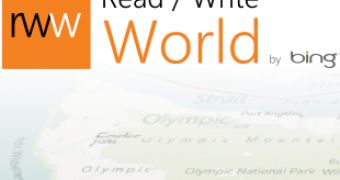Read / Write World by Bing is an innovative project set to centralize and bring structure to disparate and random universe of web based content and information by identifying the connections between user-produced / shared files based on geographic location. The end goal of Read / Write World was unveiled at the Where 2.0 conference by Blaise Agüera y Arcas, Chief Architect of Bing Mobile, which also unveiled to the world the software giant’s vision of enhancing its mapping platform with visualization capabilities.
Powered by Windows Azure, the new project sports Cloud-based geo-indexing, matching and processing capabilities that will be leveraged to index, unify, and connect of all geo-linked media available on the Internet.
David Gedye, Principal Program Manager for Bing Mobile’s Augmented Reality Team highlighted some of “the scenarios it will enable include:
- Seeing your photos automatically connected to others.
- Being able to simply create immersive experiences from your own and others’ photos, videos, panoramas, and models
- “Fixing” the world, when the official imagery of your street is out of date.
- Visually mapping your business, your rental apartment, or your local strip mall, and allowing everyone to explore it.
- Understanding the emergent information from the density and tagging of Geo-media.”
In this regard, images, videos, panoramas, maps, annotations, models and additional media and content will act as bricks to build the Read / Write World augmented reality.
Holding everything together is the new Reality Markup Language (RML), a markup language capable of mapping online materials in accordance to their geographical location.
“Just as a webpage describes content meant for display in a browser window, RML maps content (photos, panoramas, geometry, and more) directly to the world, in 2D and 3D, for display and/or augmentation,” Microsoft stated.
“The goal is simplicity and ease of use: expose the inter-collection of many terabytes of information in a common easy-to-traverse metadata format. Think of these as the slightly more elaborate and descriptive weblinks and metadata for the real world.”
Untitled from Read/Write World on Vimeo.

 14 DAY TRIAL //
14 DAY TRIAL //